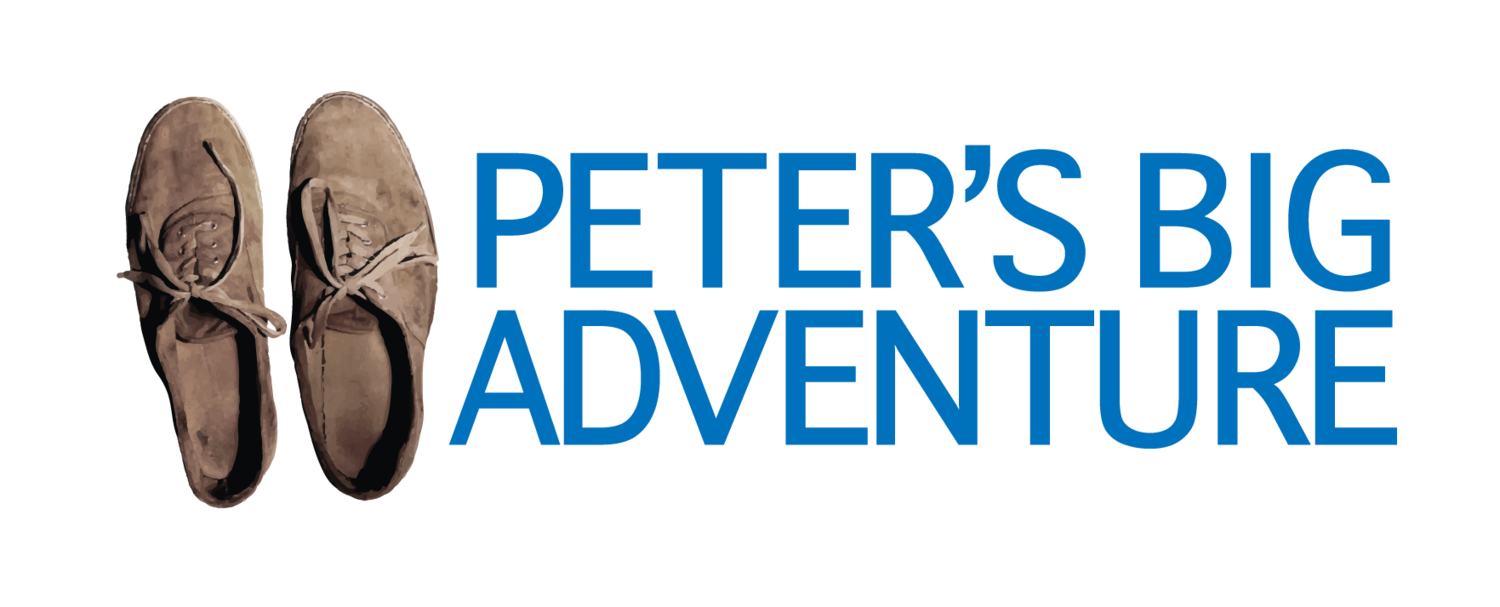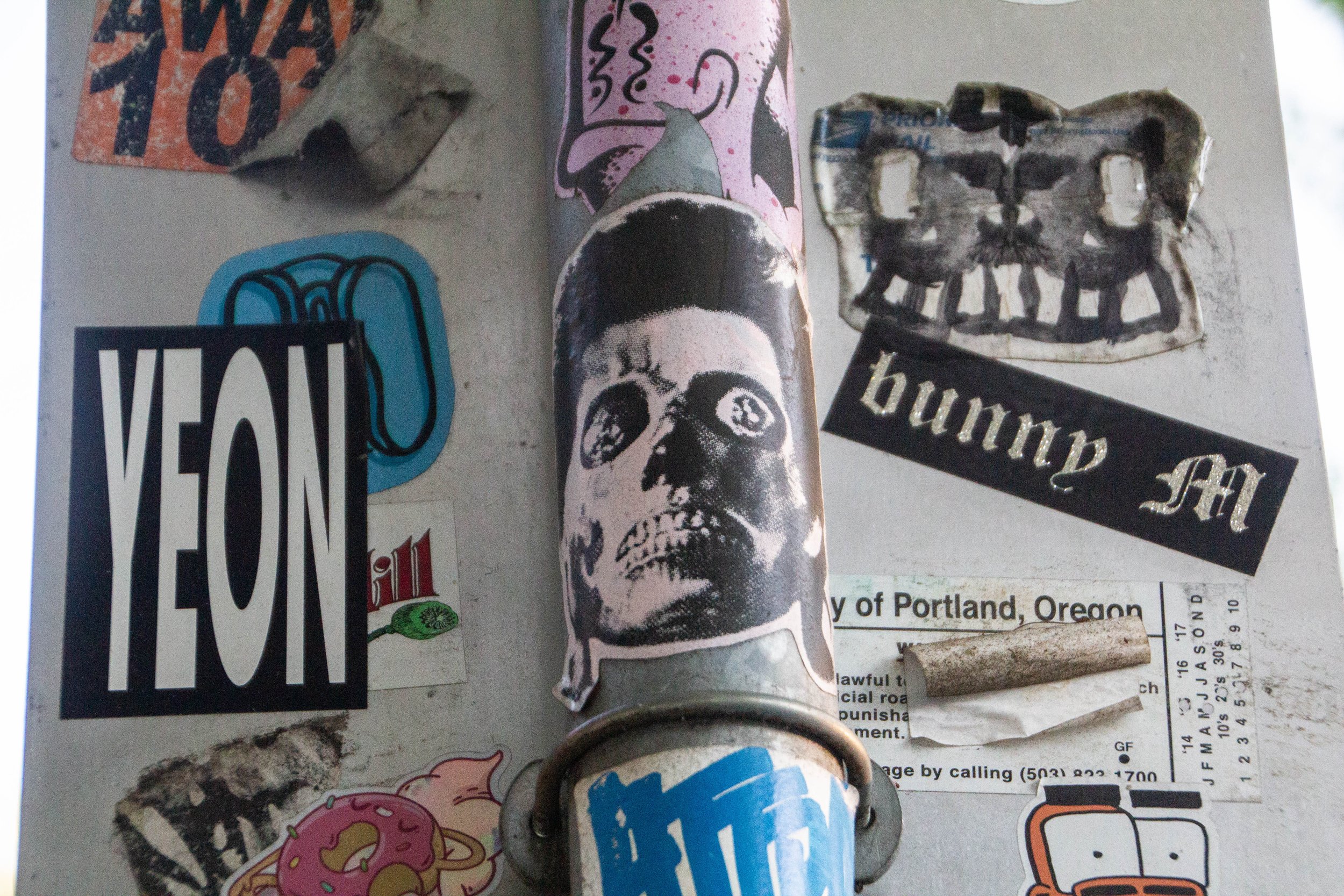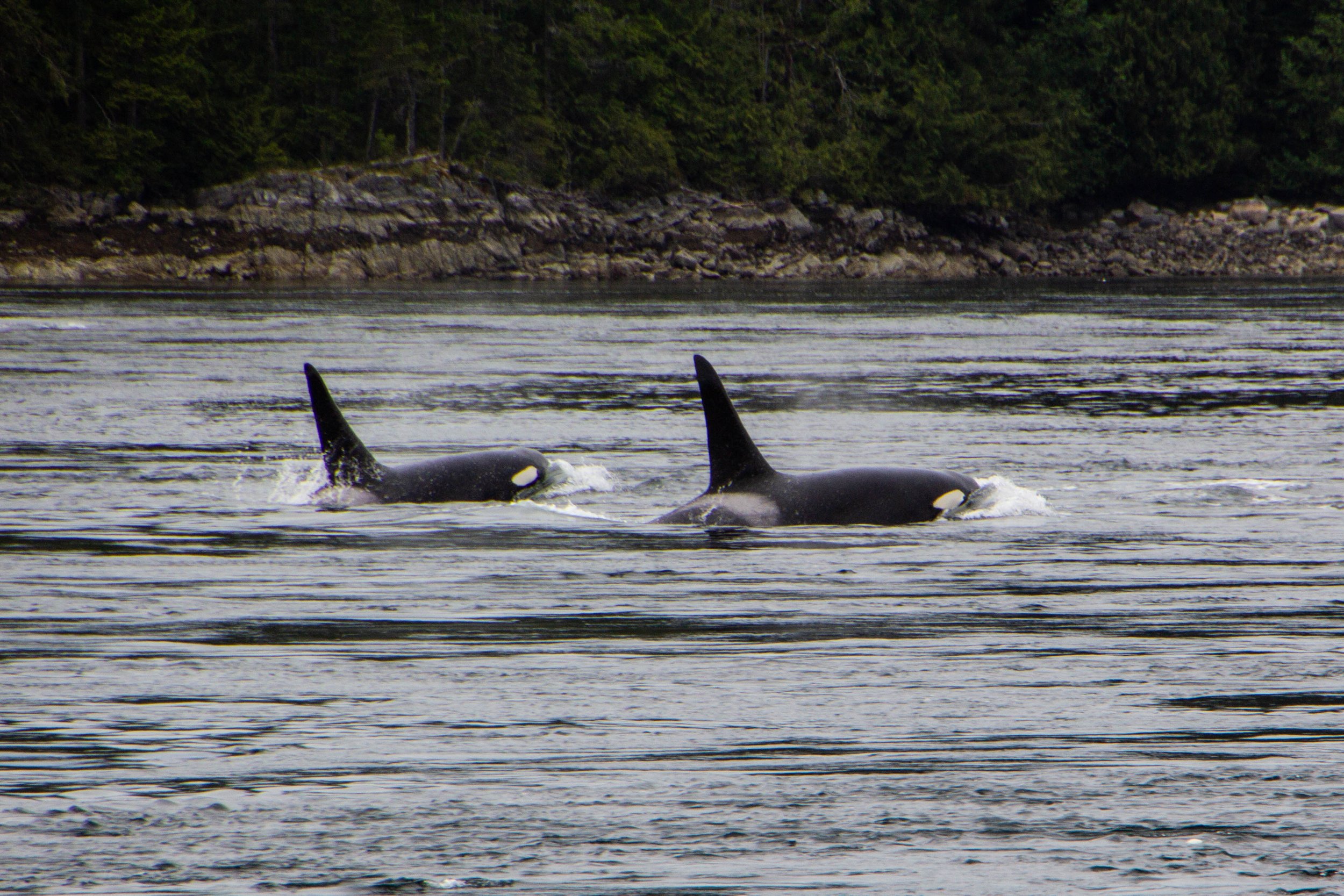I’m going to do something a little different today. I love piecing together articles on street art wherever I can. It’s a great way to get to know a place! I had a hunch that Portland was going to have some really cool street art, but to my surprise and slight disappointment, I didn’t find quite the density of murals that I would have needed to merit a full article.
However, as I walked around the city, I began to notice that nearly half of all public surfaces that I walked past—be they street signs, telephone poles, or brick walls—were absolutely PLASTERED in stickers. And I’m not talking about some garden-variety smiley face stickers. Each of these was custom-made, artistic, and—for the most part—completely outrageous. Seriously, viewer discretion is advised. This collection of stickers would make my childhood pastor WEEP!
Portland is the southernmost major city in the Pacific Northwest, and, driving northward from Sacramento, it’s the next major slice of civilization you’ll find on the West coast. Although, I should clarify that Portland is not actually coastal. It is a “port city” because it sits at the convergence of two major rivers that are connected to the Pacific Ocean: the Willamette and Columbia rivers. It’s about a 1.5 hour drive to the Pacific coast, which leads me to another thing that I want to highlight about Portland: it’s proximity to nature. This is a common theme among cities in the Pacific Northwest—including Seattle and Vancouver. All of these places are great gateways to some incredible natural beauty. And Portland is no exception. With Portland as your “home base,” you can (for example) do day trips to 1) surf, 2) snowboard, 3) hike, 4) rock climb, and 5) sail on 5 back-to-back days. For the “outdoorsy” among us, it’s a great place to be.
I actually came to love Los Angeles during my last visit (right before COVID hit)—it is a very distinct place. And as Venice beach unfolded before me like some sort of surreal virtual reality, I realized that this might be the most “LA” place I’d yet seen. It is the stereotype of what this place is. It was Saturday night and everybody was out having fun. I hurriedly crossed the boardwalk and made a B-line for the beach so I could catch the sunset. It did not disappoint. I’ll postpone additional narrative in favor of just showing you the pictures I took.
Orcas, or Killer Whales, were something of a feared creature in the olden days. Apparently, back in the 1800s when this part of the world was first being explored by Europeans, their technical/scientific classification was actually “Monster.” Hilarious as this might seem, it does make some sense. Black whales with sharp teeth and shark fins? Yeah, that would have definitely felt somewhat monstrous to me if I was an early sailor of these waters. The conventional wisdom of the day was that, if you fell in the water, you needed to get out ASAP so an Orca wouldn’t eat you. If you hadn’t already guessed this, there is, in fact, no record of an Orca ever eating a human. But this was still a legitimate fear as recently as the 1960s when they actually mounted a machine gun on a coastal bluff known as Chatham Point with the aim of shooting as many Orcas as possible. 🤯 Somehow, for the time when this gun was actively scouring the seas, the Orcas stayed clear of this area and there were no casualties. So Orca/human tensions have never escalated to be anything more than a cold war. And it was not long after this that human sentiments toward Orcas began to change for the better.
Cortes Island is perfect. I am not speaking figuratively. Literally perfect. Every little detail of this island was so effortlessly interesting, unique, and authentic… I don’t know that I have ever seen a place quite like it. It felt like I was living in a chapter of a book. It was like the entire place was straight out of a Wes Anderson movie. Think Moonrise Kingdom, but on an island off the coast of British Columbia, and mostly populated by adults. I could make a cool Pacific-Northwest-meets-Martha’s-Vineyard Pinterest board inspired by this place. Every property was tastefully weathered and clearly maintained with a personal, practical touch. There were no houses that screamed “VACATION RENTAL” here. Every single one of them looked like they were the active, primary residence of an eccentric gardener.
Our time in the wild, mossy forests of Western Vancouver Island is coming to an end. It’s time for us to make the journey northward toward a place called Campbell River. There are some really cool things in store when we get there, but before we jump into any of that, I wanted to share some miscellaneous exploits from our time between destinations. I often feel like it’s these “in-between” experiences where you really get to know a place, and Vancouver Island was no exception. The reason I feel like I “know” this place at all is because of the ground we covered in this article.
Avatar Grove is well-named; it really does feel like something out of Avatar. Or maybe Jurassic Park. It is a tangled, mossy labyrinth of ancient, knotted trees rising out of an infinite carpet of prehistoric-looking ferns. Each tree branch is draped with moss, similar to the way Spanish Moss hangs from every tree in Savannah—but in a green, lush, distinctly Pacific Northwest kind of way. Every little detail of this place was fascinating and photogenic. From the mossy, leafy forest floor, to the canopy high above our heads, every inch felt like its own world.
In the last article, we checked out Sombrio beach, which I think is likely the most easily-accessible stretch of coastline in the Port Renfrew area, and also the place that resembles the classic “beach” (i.e. sand, waves, etc) most closely. However, the majority of Vancouver Island’s coastline is not as easy to access and is NOT your classic sandy beach. This is a rocky, mossy, rugged, chaotic, windswept boundary zone, perpetually pounded with massive waves, riddled with lively tide pools, and entirely unaccommodating to the “beach vacation” experience. It’s also extremely cool.
To give you an idea of exactly how isolated this place is—the one gas station in the area was out of service during our visit, so we had to drive 2.5 hours EACH WAY to get to the next nearest gas station. We had been advised to stock up on groceries in Victoria before coming out here because we’d have to travel similar distances to find a supermarket. Also, Port Renfrew apparently experiences random rolling blackouts from time to time. When the power went out on our last day, we stopped by a local hotel & restaurant that had a generator running to ask how long these blackouts usually lasted—they told us that the last one lasted 2 days. 🤯 Suddenly, the flashlights we found waiting for us in our Airbnb made a ton of sense. That’s part of the deal out here!
“……Paraguay?” I asked through a confused squint. I did not recognize this name, but it sounded a bit like Paraguay, even though this guy was clearly not from South America.
“No… Haida (exaggerated pause) Gwaii.”
Google that. Google “Haida Gwaii.” I had never even heard of this place. And I have heard of most places.
That is the kind of place that Victoria serves as a way-point for. It’s a completely different world that awaits up here. But I’m getting ahead of myself. First, let’s take a walk around Victoria…










